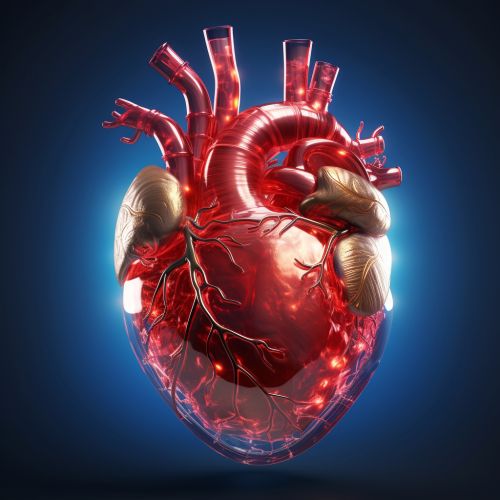Heart attack
Introduction
A heart attack, also known as myocardial infarction, is a serious medical condition that occurs when the blood supply to part of the heart is blocked, usually by a blood clot. This can cause damage or death to the part of the heart muscle that is deprived of oxygen and nutrients. Heart attacks are a leading cause of death worldwide.
Causes
Heart attacks are usually caused by coronary artery disease (CAD), a condition in which the coronary arteries (the major blood vessels that supply the heart with blood) become narrowed due to a build-up of fatty deposits known as plaques. This process is known as atherosclerosis. A heart attack can occur if a plaque ruptures and forms a blood clot that blocks blood flow to the heart muscle.


Symptoms
The symptoms of a heart attack can vary from person to person, and they may not always be sudden or severe. Common symptoms include chest pain or discomfort, which may feel like pressure, squeezing, fullness, or pain; discomfort in other areas of the upper body, such as the arms, back, neck, jaw, or stomach; shortness of breath; and other symptoms such as cold sweats, nausea, light-headedness, or fatigue.
Diagnosis
Diagnosis of a heart attack is based on the patient's symptoms, medical history, and various diagnostic tests. These may include an electrocardiogram (ECG), which can detect abnormalities in the heart's rhythm and structure; blood tests, which can detect certain enzymes that are released when the heart muscle is damaged; and imaging tests such as an echocardiogram, a chest X-ray, or coronary angiography.
Treatment
Treatment for a heart attack aims to restore blood flow to the heart muscle as quickly as possible to prevent further damage. This can be achieved through medications, such as aspirin, thrombolytics, antiplatelet agents, and pain relievers; and medical procedures, such as coronary angioplasty and stenting, and coronary artery bypass surgery. After a heart attack, patients may also need to take medications to prevent future heart attacks, manage symptoms, and reduce the risk of complications.
Prevention
Prevention of heart attacks involves managing risk factors that can be controlled, such as smoking, high blood pressure, high cholesterol, diabetes, physical inactivity, and obesity. This can be achieved through lifestyle changes, such as eating a healthy diet, getting regular exercise, maintaining a healthy weight, not smoking, and limiting alcohol intake; and taking prescribed medications as directed.
Prognosis
The prognosis after a heart attack can vary greatly depending on the extent of the heart damage and the patient's overall health. Some people may fully recover, while others may have lasting heart damage or other complications, such as heart failure or arrhythmias. Early treatment and comprehensive follow-up care can improve the prognosis and quality of life for many people after a heart attack.
Epidemiology
Heart attacks are a major health problem worldwide. According to the World Health Organization (WHO), cardiovascular diseases (CVDs) are the number one cause of death globally, and more people die annually from CVDs than from any other cause. Over three quarters of CVD deaths take place in low- and middle-income countries.
